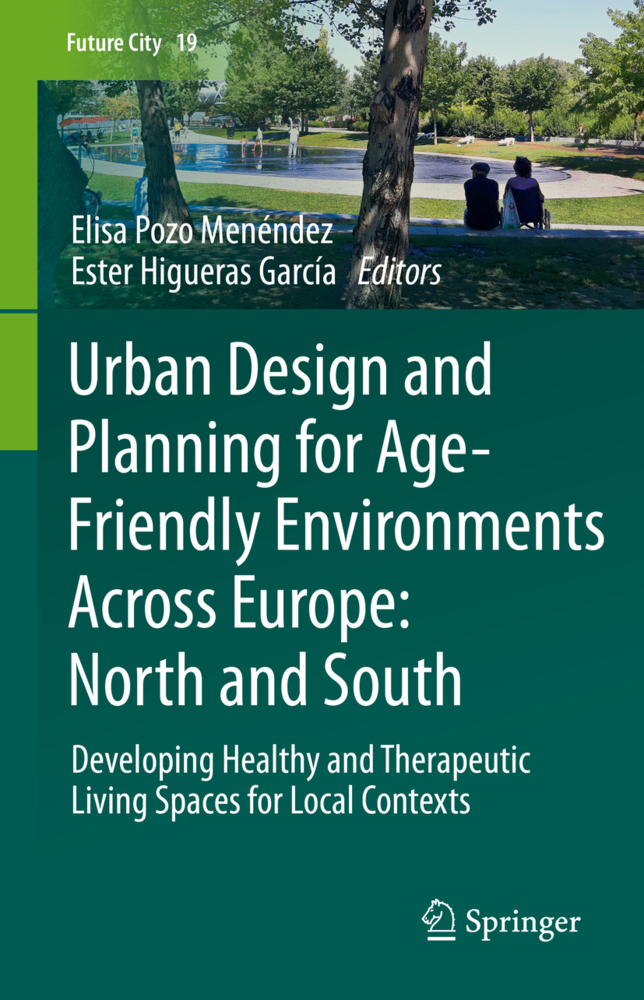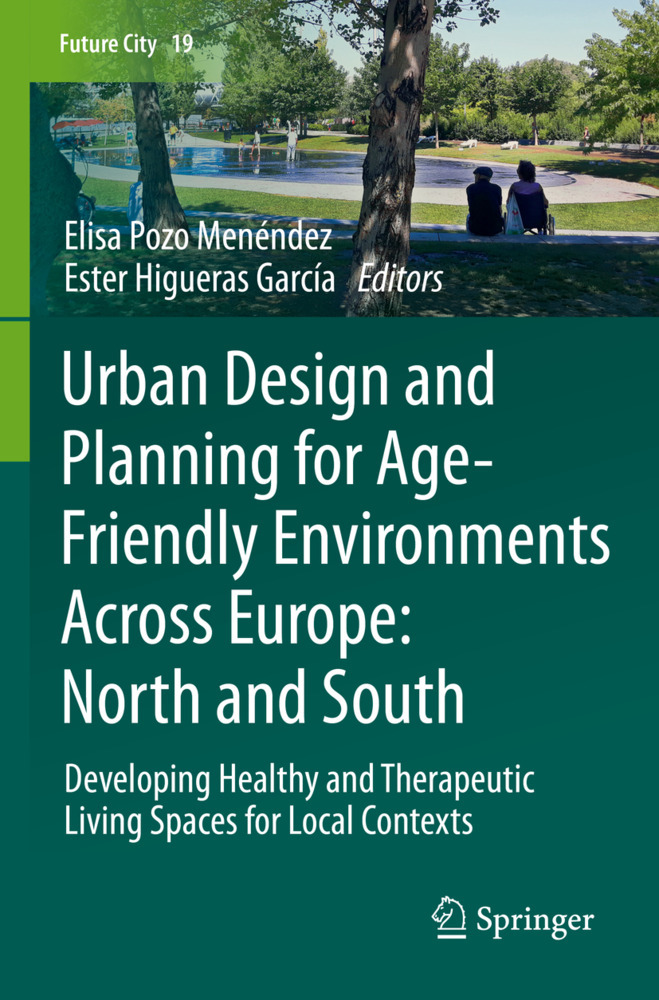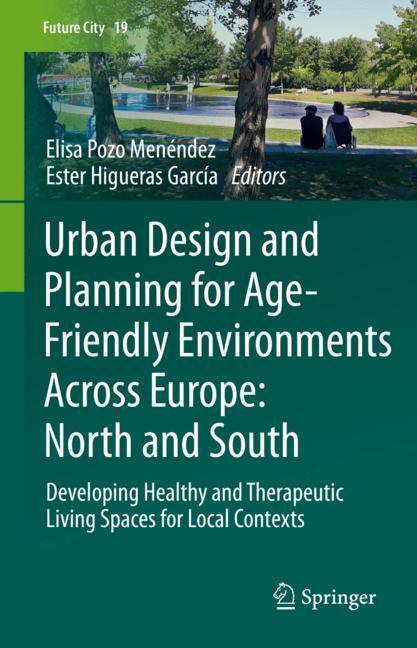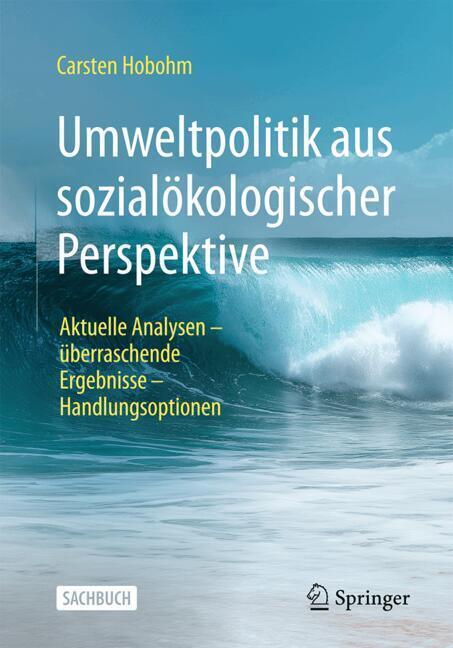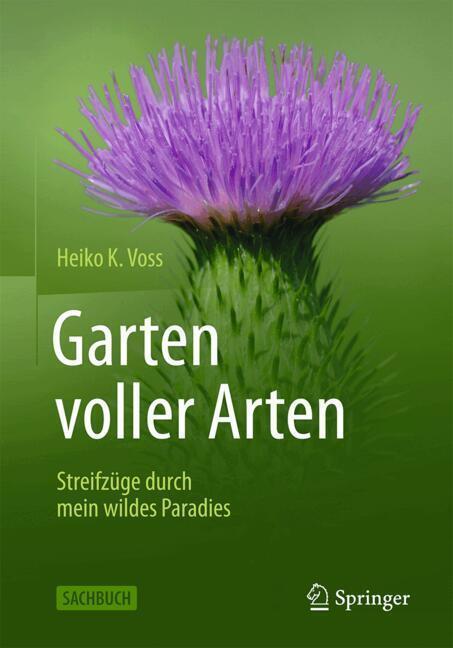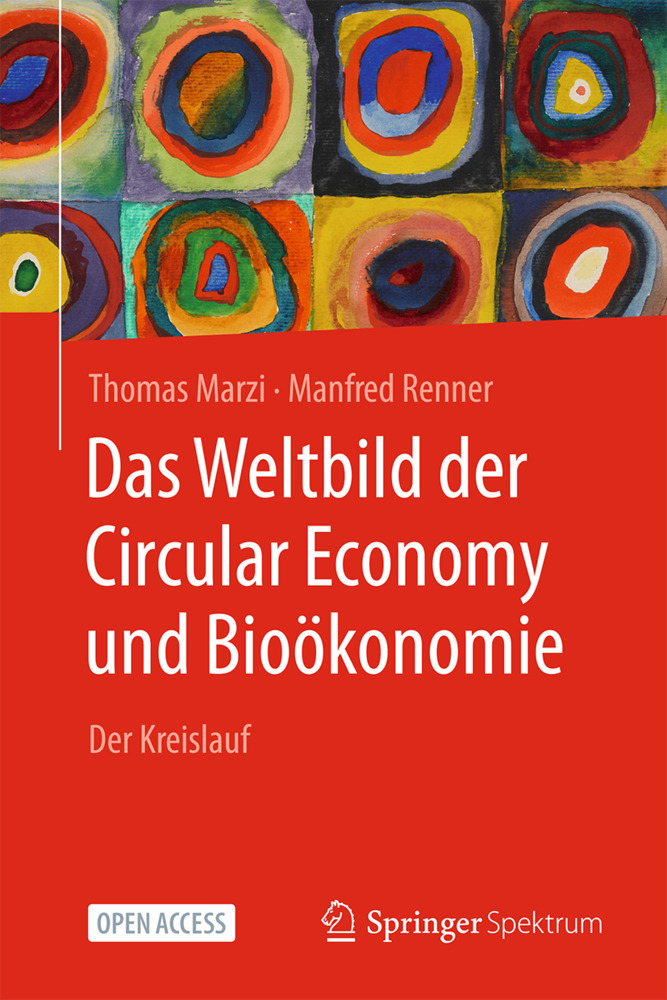Urban Design and Planning for Age-Friendly Environments Across Europe: North and South
Urban Design and Planning for Age-Friendly Environments Across Europe: North and South
This book represents a multidisciplinary and international vision across different countries in Europe that are facing similar challenges about ageing and quality of life in present cities. It is divided in three main topics from the global context of health in cities and reduction of health inequities to the current research of different study cases, focusing on residential models and the relationship with the built environment. The third chapter illustrates best practices with some study cases from different cities in Europe. Friendlier environments for older people come together with the need of innovation, smart and updated technologies, healthier environments and mitigation of climate change.
Health re-appears nowadays as one of the priorities for urban planning and design, not only for the communicable diseases and the effect of the pandemics, but also for the non-communicable diseases, that were also triggering the wellbeing and equity of our cities. Indeed, the Covid-19 pandemic has highlighted health inequities and vulnerabilities of those areas of the city that were already deprived and facing other health problems, such as obesity, diabetes, social isolation, respiratory problems or mental health issues, specifically applying for vulnerable groups. Older adults have been one of the most affected groups from the pandemic's threats and derived consequences. In this context, the care crisis arises intertwined with the design and planning of our cities, where there is an urgent need to regenerate our environments with a perspective of sustainability, inclusion, and health prevention and promotion.
From the global urban challenges to the specific contextualisation of each city and study cases, each chapter offers an updated insight of the main questions that we should consider to address urban planning and design from the perspective of ageing and social inclusion in European cities.
Introduction (Elisa Pozo Menéndez)
Part 1. The post-pandemic city for healthy ageing and wellbeing
Chapter 1. Urban planning and health equity. Integrating global and European perspectives in local (Ângela Freitas)
Chapter 2. Social innovation and adaptability for ageing in place in cities: a comparison between France and Japan (Camille Picard)
Chapter 3. Silver cities: attractive cities for elderly (Montserrat Calvo)
Chapter 4. Quality of life, living arrangements and care support for the older population (Carmen Rodriguez-Blazquez)
Chapter 5. Active Ageing and Age-Friendly Communities: constructing an image of old age and ageing (Gloria Fernández-Mayoralas)
Chapter 6. Comprehensive perspective of care design for the accompaniment of the person during the life journey (Álvaro García Soler)
Chapter 7. Resilient cities and built environment. Urban design, citizens and health. Learning from COVID-19 experiences (Miguel Padeiro)
Part 2. An inclusive environment: alternatives and challenges for ageing in place in North and South European Cities
Chapter 8. Framework for inclusive residential projects for all: further research lines (Rose Gilroy)
Chapter 9. Housing for an active ageing. Learning and outcomes from the Danish paradigm and the application to the Spanish context. Lugaritz Lifetime Homes in Donostia - San Sebastián (Heitor García Lantarón)
Chapter 10. Development and Management of Cohousing Initiatives for a Friendly Ageing in Spain (Fermina Rojo-Pérez)
Chapter 11. An evidence-based approach to optimize age-care facility design for People with Dementia (Neveen Hamza)
Chapter 12. Thermal comfort for older population in Spain. Diagnosis and strategies for a climate change scenario (Emilia Román López)
Chapter 13. Use of public spaces by older adults. Comparison among Madrid and Newcastle Upon Tyne (María Teresa Baquero Larriva)
Chapter 14. Greenery urban design for good mental health. Analysis of a vulnerable district of Madrid(Elisa Pozo Menéndez)
Chapter 15. Dementia-friendly communities and challenges from built environment design. The Belgian case (Veerle Baert)
Chapter 16. The covered market between crossroads and narration of memories. A brief glimpse of an Italian market and the imagery that runs through it between past and present (Caterina Gallerani)
Chapter 17. Inclusive innovation for age-friendly environments. The role of Living Labs dynamics in territories (Luciana Castro Gonçalves)
Chapter 18. Citizen engagement: inclusive methodologies towards creating a city for all ages (Barbara Douglas)
Chapter 19. Eleven study cases across Europe (Elisa Pozo Menéndez)
Chapter 20. Learning and general principles for healthy and inclusive design considering regional context (Elisa Pozo Menéndez)
Chapter 21. Conclusion and recommendations for further work (Elisa Pozo Menéndez).
Pozo Menéndez, Elisa
Higueras García, Ester
| ISBN | 978-3-030-93874-1 |
|---|---|
| Artikelnummer | 9783030938741 |
| Medientyp | Buch |
| Copyrightjahr | 2022 |
| Verlag | Springer, Berlin |
| Umfang | XXVIII, 469 Seiten |
| Abbildungen | XXVIII, 469 p. 1 illus. |
| Sprache | Englisch |

